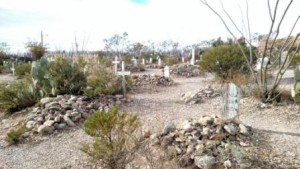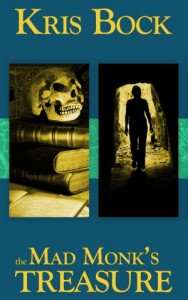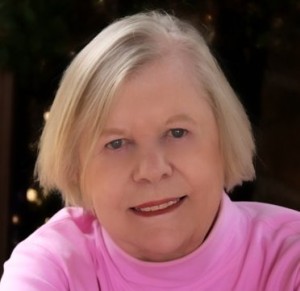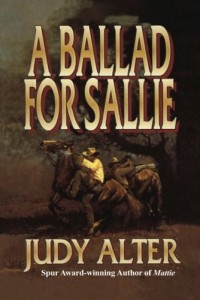 Relevant History welcomes Kris Bock, who writes novels of suspense and romance with outdoor adventures and Southwestern landscapes. The Mad Monk’s Treasure follows the hunt for a long-lost treasure in the New Mexico desert. In The Dead Man’s Treasure, estranged relatives compete to reach a buried treasure by following a series of complex clues. In The Skeleton Canyon Treasure, sparks fly when reader favorites Camie and Tiger help a mysterious man track down his missing uncle. Whispers in the Dark features archaeology and intrigue among ancient Southwest ruins. To learn more about her and her books, visit her web site and sign up for her newsletter.
Relevant History welcomes Kris Bock, who writes novels of suspense and romance with outdoor adventures and Southwestern landscapes. The Mad Monk’s Treasure follows the hunt for a long-lost treasure in the New Mexico desert. In The Dead Man’s Treasure, estranged relatives compete to reach a buried treasure by following a series of complex clues. In The Skeleton Canyon Treasure, sparks fly when reader favorites Camie and Tiger help a mysterious man track down his missing uncle. Whispers in the Dark features archaeology and intrigue among ancient Southwest ruins. To learn more about her and her books, visit her web site and sign up for her newsletter.
*****
Nonfiction books and documentaries about 19th-century gunslingers remind us that truth is often stranger than fiction. History is often equally dramatic as well. The Old West is full of true stories of bandits, shootouts, and lost treasures.
Many people attempt to divide historical figures into heroes and villains, lawmen and outlaws. In reality, most people are more complex than that, and few famous people from the Old West led blameless lives.
Wyatt Earp is often regarded as a heroic lawman. However, he spent only about six years in law enforcement. He also worked as a gambler, buffalo hunter, stagecoach guard, and Teamster, among other jobs. He was arrested for stealing a horse, but he escaped from jail.
 Like many famous Western figures, Wyatt Earp wound up in the famous town of Tombstone, Arizona. Wyatt Earp and Ike Clanton allied to find a group of cowboys who had robbed a stagecoach, but the alliance fell apart—possibly because the Clantons were involved in the robberies. This led to the famous shootout at the OK Corral and the deaths of Billy Clanton and the two McLaury brothers, known cattle rustlers. Soon after, Wyatt’s brother Virgil was seriously wounded in a shooting, and their brother Morgan was killed in a shootout. The attackers were unknown, but Wyatt and his gang killed several suspects. He fled town to avoid prosecution.
Like many famous Western figures, Wyatt Earp wound up in the famous town of Tombstone, Arizona. Wyatt Earp and Ike Clanton allied to find a group of cowboys who had robbed a stagecoach, but the alliance fell apart—possibly because the Clantons were involved in the robberies. This led to the famous shootout at the OK Corral and the deaths of Billy Clanton and the two McLaury brothers, known cattle rustlers. Soon after, Wyatt’s brother Virgil was seriously wounded in a shooting, and their brother Morgan was killed in a shootout. The attackers were unknown, but Wyatt and his gang killed several suspects. He fled town to avoid prosecution.
Many movies have been made featuring Wyatt Earp, most of them romanticizing his life. The truth is more complex.
A Deadly Killer
Curly Bill Brosius, on the other hand, was pure outlaw and a close friend of the Clantons. He was supposedly a crack shot who could hit running jackrabbits and shoot out candle flames without breaking the candles. His idea of a practical joke was to make a preacher dance during a sermon by shooting at his feet. He forced Mexicans at a community dance to take off their clothes and dance naked. He killed at least one man in a robbery, escaped from prison, and led a gang of rustlers in Arizona Territory.
 In 1880, in Tombstone, Curly Bill killed popular Marshal Fred White. The Marshal was trying to take Bill’s gun and it went off, hitting White in the groin. Wyatt Earp then knocked Bill unconscious with his gun. White said he didn’t think Curly Bill was trying to kill him, but he died from his wound the next day. Curly Bill was also implicated in some revenge killings and at least one death during a bar fight. He was implicated in the murder of Morgan Earp, but without proof he wasn’t charged.
In 1880, in Tombstone, Curly Bill killed popular Marshal Fred White. The Marshal was trying to take Bill’s gun and it went off, hitting White in the groin. Wyatt Earp then knocked Bill unconscious with his gun. White said he didn’t think Curly Bill was trying to kill him, but he died from his wound the next day. Curly Bill was also implicated in some revenge killings and at least one death during a bar fight. He was implicated in the murder of Morgan Earp, but without proof he wasn’t charged.
Violence in the Desert
Curly Bill also might have been involved in the Skeleton Canyon Massacre. Here history and legend get muddled. Some people claim that Mexican bandits looted Monterrey, Mexico, and escaped across the border with a treasure worth $75,000, or $2 million, or $8 million. Others claim there is no evidence of such a heist in Monterrey, and that it’s doubtful such a treasure ever existed to be stolen.
Regardless, violence came to Skeleton Canyon, a shallow canyon in southeastern Arizona, not far from the Mexico border. An American gang ambushed a group of Mexicans—possibly the bandits, or else merely vaqueros (cowboys). One story says Curly Bill’s gang shot the Mexicans out of their saddles, which caused their mules to stampede. The bandits then shot the mules to keep them from running away with the treasure, but then they had no way to transport the loot. Two men from the gang, Zwing Hunt and Billy Grounds, hid the treasure somewhere in the canyon. When they were killed, the location of the hidden treasure was lost.
Curly Bill had been wounded six weeks before the Skeleton Canyon Massacre and was supposedly still recovering. Was he involved or not? Was the violence over a treasure that would be worth millions today, or merely over some cattle? The debates continue, and some people still hunt for the treasure. The Skeleton Canyon Treasure, set today, was inspired by the legendary treasure.
What is most likely true, but is still challenged by some people, is that Wyatt Earp killed Curly Bill in a shootout in 1882. Bill was in his thirties, which, considering his lifestyle, was a surprisingly long life.
Unsolved Mysteries took a look at the Skeleton Canyon Treasure.
Tombstone is now a popular place for tourists to visit.
*****
 A big thanks to Kris Bock. Pick up your free copy of the first of her Southwest treasure hunting books, The Mad Monk’s Treasure, here.
A big thanks to Kris Bock. Pick up your free copy of the first of her Southwest treasure hunting books, The Mad Monk’s Treasure, here.
**********
Did you like what you read? Learn about downloads, discounts, and special offers from Relevant History authors and Suzanne Adair. Subscribe to Suzanne’s free newsletter.




